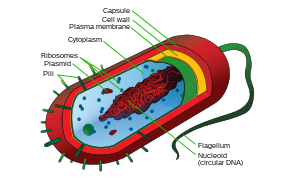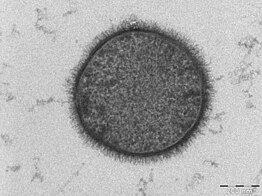A slime layer in bacteria is an easily removed (by centrifugation, etc.), unorganized layer of extracellular material that surrounds bacteria cells. Specifically, this consists mostly of exopolysaccharides, glycoproteins, and glycolipids.
The slime layer is not to be confused with the S-layer, a separate and highly organised glycoprotein layer surrounding many bacterial cells.
The function of the slime layer is to protect the bacteria cells from environmental dangers such as antibiotics and desiccation. The slime layer also allows bacteria to adhere to smooth surfaces such as prosthetic medical devices and catheters. It may permit bacterial colonies to survive chemical sterilization with chlorine, iodine, and other chemicals, leaving autoclaving or flushing with boiling water as the only certain methods of decontamination.
A bacterial capsule is similar, but is a well ordered structure that is resistant to washing off.
See also

- biofilm




0 komentar :
Posting Komentar